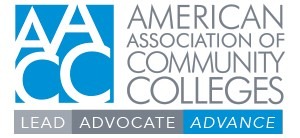Executive Order on ED Elimination
On Thursday afternoon, President Trump is expected to sign a new Executive Order (EO) directing Education Secretary Linda McMahon to take steps to begin dismantling the Department of Education (ED) and shifting its responsibilities and remaining staff to other government agencies. The EO and its potential impacts will be covered in more detail in the Community College Daily. It is important to note that both the Department itself and many of its critical programs are authorized in statute and will take an act of Congress to fully suspend.
This action comes just over a week after ED announced a formal Reduction in Force (RIF) process, placing more than 1,000 agency employees on administrative leave starting March 21. Coupled with the more than 600 ED employees who accepted voluntary resignations and retirements, this will reduce the agency’s workforce from about 4,133 to about 2,183, even before the Secretary begins further actions to comply with the new EO.
On Friday, acting Under Secretary James Bergeron sent a letter to education stakeholders reiterating that the RIF should not impact critical ED functions, including Office of Federal Student Aid (FSA) operations, Office of Postsecondary Education (OPE) staff overseeing institutional aid programs, and Office of Career, Technical, and Adult Education (OCTAE) staff administering Perkins Act programs. It is not yet clear how these essential offices will be reorganized as a result of both the RIF and this week’s EO.
AACC is carefully monitoring developments at the Department of Education and will provide more updates on changes to staffing, organization, and agency functions as they become available.
Congress passes year-long CR, wrapping up FY 25 appropriations
On Friday, President Trump signed a year-long continuing resolution (CR), funding the government through September 30 and narrowly avoiding a partial government shutdown. As covered by AACC’s David Baime in the Community College Daily, while the CR does ensure that government agencies will remain open through the end of the fiscal year, the law does not reflect key community college priorities for FY 25 appropriations. The CR largely extends FY 24 funding levels, meaning that Congress did not provide any increases to key student and institutional aid programs, as requested by AACC and other higher education stakeholders. The CR includes rescissions to Department of Labor (DOL) Employment and Training programs and Dislocated Worker Assistance. Finally, the CR does not include any congressionally directed spending projects for FY 25 – a major blow to community colleges who had worked closely with their members of Congress to advance FY 25 projects.
Also notable, the CR does not include an explanatory statement, funding tables, or detailed report language directing agencies on how to spend appropriated money. This gives the Trump administration more latitude on how much funding each program will receive within each account.
The Trump administration is expected to release its budget priorities for FY 26 soon, kicking off next year’s appropriations process.
